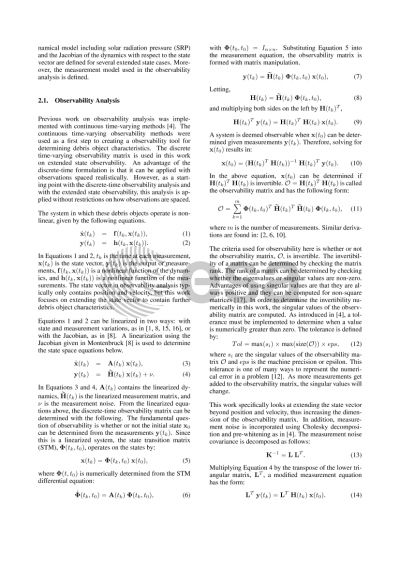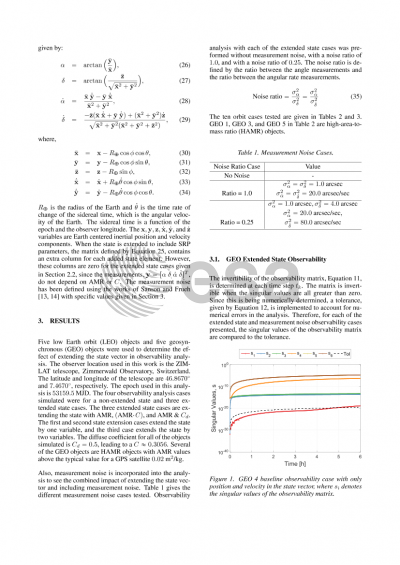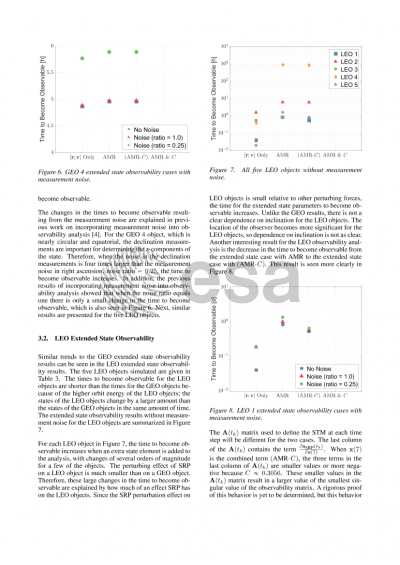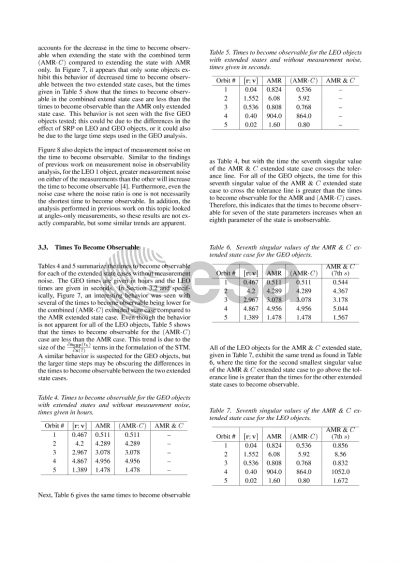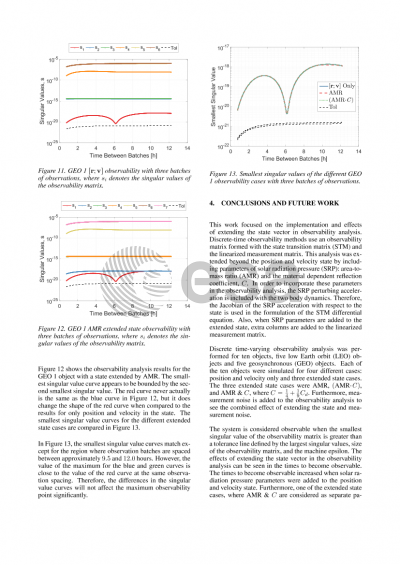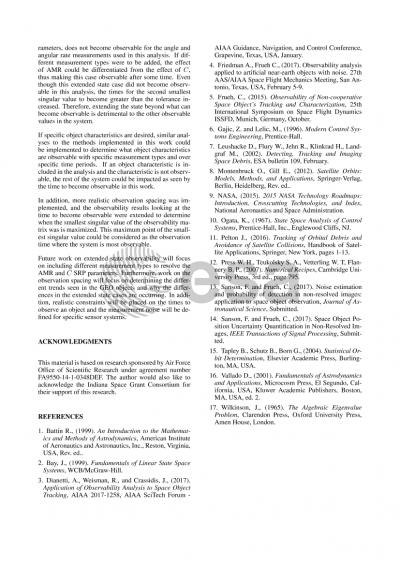Document details
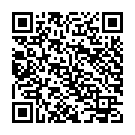
Abstract
1. Motivation
The more than 100 million debris objects greater than 1 mm from almost 60 years of humankind’s exploration and operation in space are of great concern for safety of humans and assets in Earth orbit because of potentially high impact speeds between orbiting objects [3]. Space objects can be characterized by position and velocity, attitude, material properties, surface area, reflection/absorption coefficients, and many more properties.
Observability analysis is a method for determining whether a chosen state can be determined from measurements. The state is typically composed of position and velocity. However, including object characteristics beyond position and velocity are crucial for precise orbit propagation. For example, solar radiation pressure (SRP) has a significant impact on the orbit of high and low area-to-mass ratio objects in geosynchronous orbit, and including the SRP parameters in observability analysis will result in a better understanding of debris objects.
In this paper, observability analysis is used to determine what information in various observation scenarios can be reliably extracted and solved for in an estimation process. This methodology can be used for design of sensor networks and sensor tasking.
2. Observability Fundamentals
A continuous time system for a time-varying, non-controlled object, can be defined in terms of the states, x(t), system dynamics, A(t), and measurements, y(t). The relationship between the states and the measurements is given by a measurement matrix, H*(t) [1]. The fundamental problem of observability seeks to determine if the information from measurements is sufficient to determine the epoch states. There are many approaches to setting up the observability analysis problem, but this research draws upon batch estimation methods for observability problem development.
3. Innovation of the Research
By drawing comparisons to batch estimation methods, this research analyzes the conditions which must be met for a system to be observable. An alternative method for determining the observability of a system is derived, investigated, and applied to discrete observability analysis. In this research the state is extended to include characteristic parameters which could improve the understanding of space objects [2].
An observability matrix, H, is formed with measurement matrices and state transition matrices at each time step. If the observability matrix is invertible, then the information from the measurements is sufficient to determine the states. The H matrix is common in batch estimators where information is accumulated over time with each observation, which is analogous to the fundamental question of observability.
Furthermore, a discrete, time-varying observability function has been developed to investigate different conditions for observability. The function has been implemented to compare eigenvalues and singular values for determine observability matrix invertibility. Due to numerical errors, the singular values provide a more robust method for determining observability matrix rank. Initial results show the functionality of the method for determining the observability condition via singular values.
Typically, position and velocity compose the state vector; however, extending the state to include characteristic parameters may result in a better understanding of debris objects. For example, the SRP parameters: the diffuse coefficient, Cd, and the area-to-mass ratio, A/m, are included in the state to extract information about these parameters from observations. Performing observability analysis on an extended state will uncover more information about debris objects, thus enabling better orbit determination and prediction.
References
1. Brogan W. L., (1991). Modern Control Theory, Prentice-Hall, Inc., ed. 3.
2. Frueh C. (2015). Observability of Non-cooperative Space Object’s Tracking and Characterization, 25th International Symposium on Space Flight Dynamics ISSFD, Munich Germany, October 2015.
3. NASA, 2015 NASA Technology Roadmaps: Introduction, Crosscutting Technologies, and Index, National Aeronautics and Space Administration, 2015.
Preview

